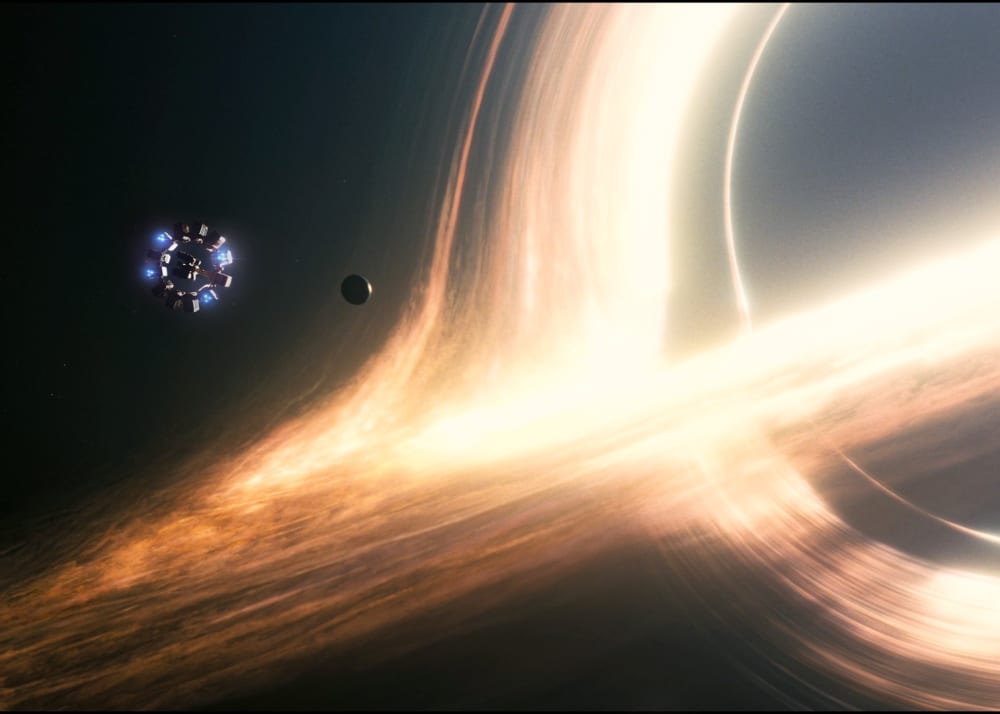My Code Universe#

Imagine a world where the magic of movies leads to real scientific breakthroughs. That’s precisely what happened with Christopher Nolan’s film ”Interstellar (2014)”. The team, including renowned scientist Kip Thorne, utilized computer simulations to craft breathtaking scenes of black holes. But their work transcended cinematic achievement—they advanced our understanding of how gravity bends light, marking a significant milestone for science, all sparked by movie special effects.
Computer simulations serve as virtual laboratories, enabling scientists to test hypotheses in scenarios that might be too risky or expensive to replicate in the physical world. They can innovate new materials or probe the depths of the stars and the cosmos. The ”Double Negative Gravitational Renderer”, developed for “Interstellar”, stands as a testament to the transformative power of these simulations. They’re not solely for crafting lifelike visuals in films; they’re instruments for uncovering truths within our universe. This tool didn’t just deliver stunning imagery; it offered scientists a novel method to visualize and comprehend the intricate forces surrounding black holes, proving that simulations are gateways to deciphering the enigmas of science and the cosmos.
About Me#
I’m Siavash Bakhtiarnia. My fascination with computers was sparked during my middle school years when I attended a summer computer camp. It was there that I was introduced to QBasic, my first programming language. This experience was exhilarating, as it felt like I was learning to converse with computers, to transform simple text characters into something tangible, bringing ideas to life. It was as if I had the power to create my own tiny universe. This marked the beginning of my adventure, fueled by a curiosity that would guide my future pursuits.
Fast forward to my college years, where textbooks replaced camp manuals. I found myself drawn to the quiet corners of the library. Among the bookshelves, I discovered the timeless language of Pascal, which shared its wisdom like an ancient scholar. Together, amidst the hushed rustle of pages and the soft murmur of thoughts, we navigated the maze of data. We solved puzzles, leaving a trail of solved problems in our wake.
It was during my Ph.D. in Nanotechnology that I fully realized the power of programming. Python, the champion of the digital era, fascinated me with its capabilities for materials modeling. With its elegant syntax and extensive libraries, Python became my reliable ally in deciphering the intricacies of the digital world.
As a coding enthusiast with a background in Material Science, I’ve realized that computers provide a unique kind of laboratory. Here, we can explore concepts that might be nearly impossible or too costly to examine in the real world. With Python, we can traverse various computational landscapes and analyze data with unparalleled precision and efficiency.
My journey has led me to the inception of My Code Universe, a platform born out of a desire to share my passion and learn from others.
About the Project#
On this platform, I’ll chronicle my projects, which range from modest experiments to, hopefully, more intricate endeavors as I refine my skills. My goal is to grow this space and forge connections with fellow enthusiasts and learners who share my zeal.
This website is a showcase of my coding hobby projects at various stages of development. Some projects come with explanations or tutorials, while others are more code-centric. While Python is my primary language, I am always eager to explore new domains and tools.
I have provided an interactive Introduction to Python on my personal website that you can visit and enjoy!
Together, let’s delve into the boundless potential of programming and simulations, learning from one another and savoring the thrill of discovery in every line of code.
Contributing#
I am excited to learn from others and build a collaborative space! Feel free to contribute code, ideas, or tutorials by submitting a pull request on Github.
Contact#
Feel free to reach out if you have any questions or suggestions! You can find me at https://bakhtiarnia.com where the contact form is available for your convenience. I look forward to connecting with you.
Copyright#
My Code Universe © 2024 by Siavash Bakhtiarnia is licensed under Attribution 4.0 International license.
Disclaimer
The content is provided "as-is" without any warranties of any kind, express or implied, including but not limited to warranties of accuracy, completeness, or fitness for a particular purpose. The author shall not be liable for any damages or losses arising from the use of this material.
Credits#
This project is created using the open source Jupyter Book project.